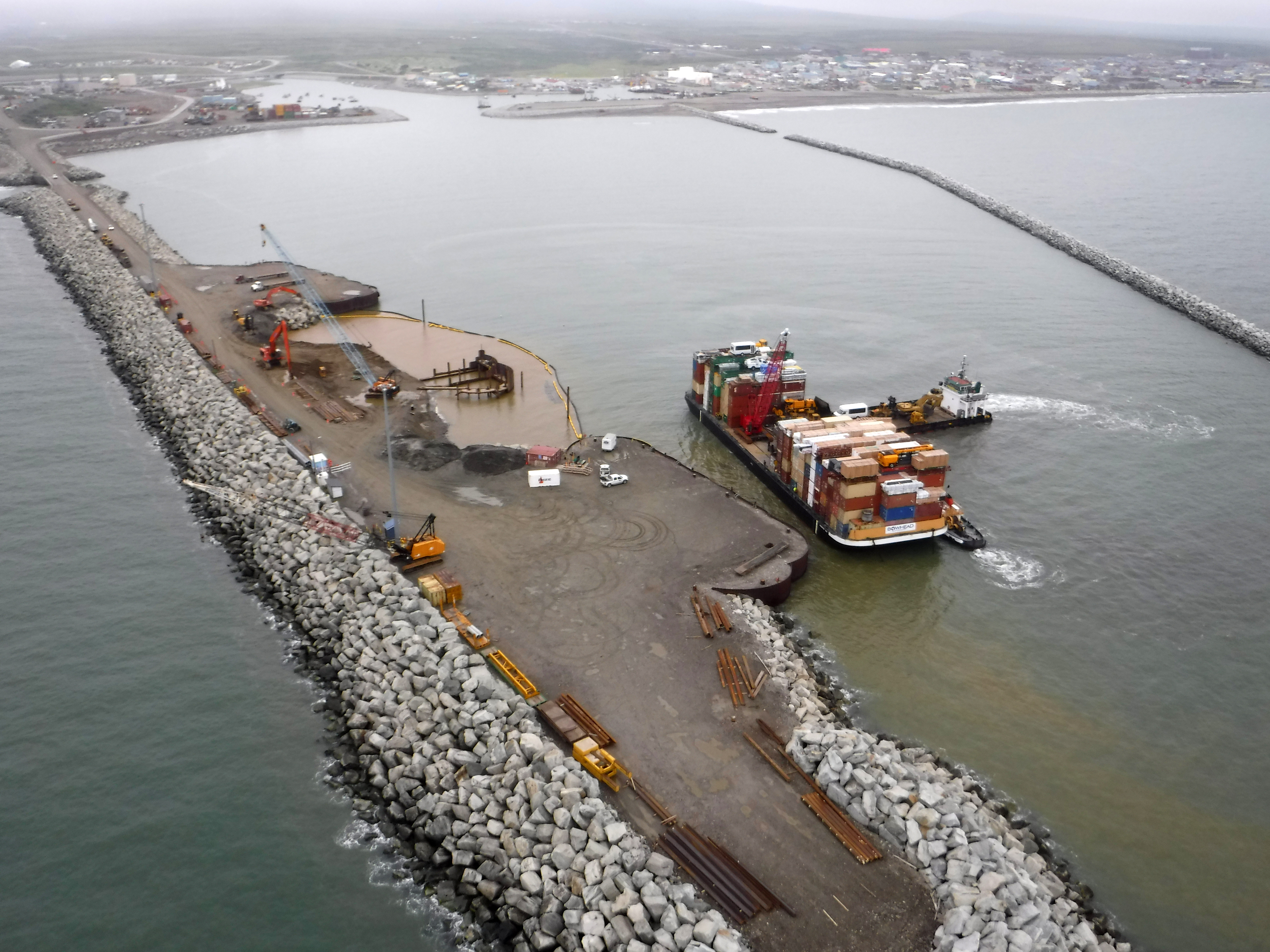How a new federal Arctic strategy could jumpstart US activity in the region
Pending federal legislation could be a solid framework for the next chapter of U.S. Arctic development — but as ice retreats, there's little time to lose.

The United States has had no shortage of aspirations for the Arctic, but it has never managed to combine those ideas into a coherent plan.
Alaska Sen. Lisa Murkowski is again trying to get the federal government to focus on the need for Arctic infrastructure and investment — everything from better ocean charts to a deep-water ports — and begin to catch up with the new conditions brought by climate change.
[Two U.S. bills could advance American presence in the Arctic]
“As it stands now, everybody has a little bit of a piece of something when it comes to the Arctic, but it doesn’t really seem as though there is any coordinating entity,” Murkowski said late last year on the Senate floor.
That’s where the Arctic Executive Steering Committee can be of immediate help. While it was established during the Obama administration, the committee has been dormant under President Trump.
Murkowski wants Congress to establish the committee by law and give it power that is not subject to the whims of whoever occupies the White House.
Murkowski and Sen. Dan Sullivan have introduced two bills to support Arctic research and development, while also giving local communities a voice in shaping their future.
An Arctic port in the Bering Sea is a no-brainer, many have said. “Unfortunately, it’s not a no-coster,” as Jon White, president of the Consortium for Ocean Leadership, put it.
Nothing about getting a port built going to be easy, but Murkowski is putting forward a strategy that seems like a logical first step.
One of her bills would establish a seaway development corporation to deal with the ocean traffic that has already started along the Alaska coast and will grow in the years ahead.
This corporation would work with federal, state and private authorities to get an Arctic port built and help create the conditions for safe and reliable travel for world commerce.
This corporation could become the means of getting infrastructure projects moving, while promoting safe commercial practices in the Arctic.
“The multiyear ice that once made the Arctic impassable and shielded our northernmost border year-round is diminishing, again, due to climate change,” she told the Senate in December.
Traffic increases are inevitable as companies and nations seek to save fuel and make transportation cheaper.
“But this looming increase in commercial vessel traffic also translates to greater demand for services and processes necessary to ensure that Arctic shipping can be reliable and safe for shippers that need to transport goods from one place to another on a timetable,” she said.
The new corporation would be financed by tolls and fees paid by shipping companies and other entities doing business in the Arctic that would see the need for better facilities and the safety that a formal regulatory system would provide.
“Through a voluntary tariff model, user nations from the remainder of the world can be invited to share with Arctic nations the capital and operating costs necessary for safe and reliable infrastructure in the Arctic Ocean and its approaches,” the legislation states.
The legislation says the Russian government charges escort fees as high as $500,000 for cargo ships and aims to collect a share of revenues that might otherwise be paid as tariffs on the Suez Canal.
“While the United States does not support mandatory tariffs in this region, it does not currently have a way to collect voluntary tariffs for providing assistance to vessels crossing through the Bering Strait or the Arctic Ocean,” the bill states.
As a likely condition of getting maritime insurance on Arctic voyages, it is easy to imagine a day when shippers would “voluntarily” pay fees to the corporation and the money would go to make the route safer and protect the investment of the shippers and the insurance companies.
The corporation could lease icebreakers from private companies or other nations and have them available for use in the Arctic — a service that many commercial operators would see as invaluable.
The corporation could also seek to build deep water ports in the Arctic, coordinate with the Coast Guard, collect tolls for safety and environmental services and perform other services.
While the particulars of the finances will have to be worked out on an international stage — the U.S. won’t be able to dictate terms to the rest of the world — the Murkowski legislation seems like a good basis on which to begin to create a durable and reliable administrative structure.
Many details will have to be worked out, but the ice is going fast and there is no time to lose.
Columnist Dermot Cole lives in Fairbanks and can be reached at [email protected].